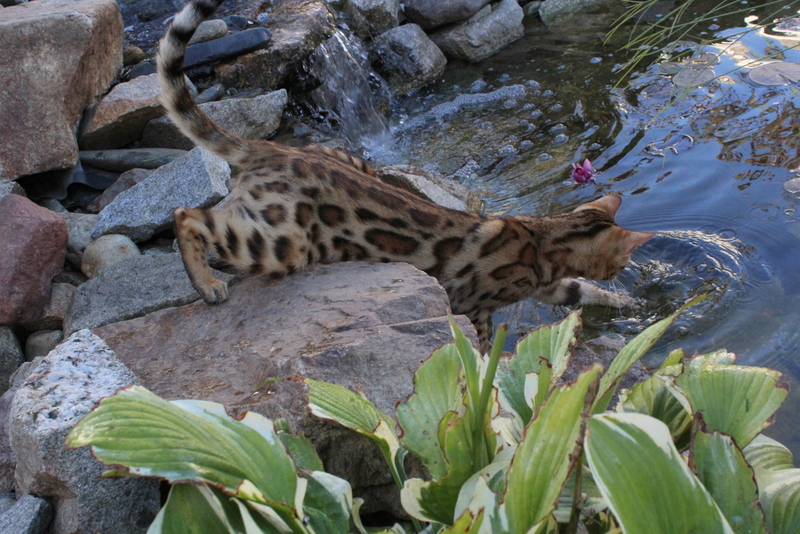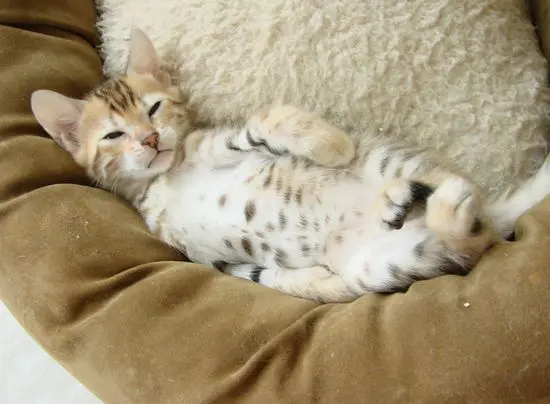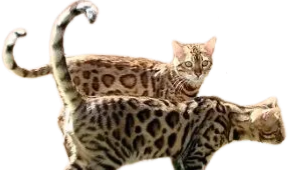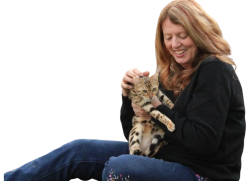Some of the Differences Between the Bengal Cat and Other Cats:
I once heard Bengals described as beautiful Regal cats and how better to describe these Majestic animals? When you take all the intriguing qualities of the wildcat— the character, the movement, the look, and the intelligence and add the gentle nature of the simple house cat—you have the Bengal cat. Jean Mill, the pioneer of this breed, not only dreamed this, she achieved it!
Owning a Bengal cat is an adventure. They are so entertaining. These cats have big hearts and love their owners very much. Bengal's love to be number one and their feelings can be hurt easily. They love attention but also like to keep a certain amount of independence. The intriguing thing about these cats is that they will stop and study a situation. Evaluate it and then act. They are so intelligent and this makes them very curious; however, they are easily trained. They should be taught the house rules at an early age.
The fur or pelt on these cats is the softest thing I think I have ever touched. To appreciate the softness and fur type is difficult as no words can describe the physical sensation of touching it. You must feel it for yourself.
The pioneers of the breed bred into the Bengal what is called a Gold Ticking Gene and as a result, their coats have a glittery sparkle that comes alive in the sunlight. This sparkle enhances their already beautifully spotted or rosetted coat and gives them a breathtaking appearance.
Some of the wild differences can be noticed right away when you look at their heads.
Their Big Vibrant Wild Eyes Are Full of Thought and Compassion.
Some of the Bengals carry the long low bodies of the wild cats. Some wild Asian leopard cats are said to have an extra vertebrae. Some of the Bengals seem to have inherited this extra length.
A few of the Bengals have an extraordinary wild call. This call almost gurgles and is not a sound you would ever hear from an ordinary house cat. It is very distinctive and very different.
The paws on the Bengal are long and slender and they use them very effectively when they want to retrieve something.
When our first Bengal arrived we had a ball on a string dangling from a perch. She climbed up on the perch, looked at it for a minute, and then proceeded to pull the ball up with her easily manipulated paws.
Asian Leopard Cats have been fondly known as fisher cats and are strong swimmers that dine on fish. Bengals have also inherited this love of water. Aquarium fish beware! They love fish tanks and don't be surprised if they join you in the shower. Pattering around in little water in the bottom of a sink or tub is great entertainment for them.

Some Asian Leopard cats are strictly tree dwellers that feed on birds and bird eggs. These cats adapted special pouches in their groin. These pouches enabled them to stretch out, allowing them greater spring and reach when travelling through the trees. Calypso has these pouches that she has inherited from her early relatives. Bengals love to play and they love to jump.
Poofing Is a Really Fun Characteristic – Bengals Poof.
They can make all the hair on their back and particularly their tails stand on end. When they do this with backs all humped up, ears back and that wild look in their eyes, they are quite a sight! Regular cats can do this to some extent. The witch's cat at Halloween comes to mind. Bengals seem to be able to get so much bigger especially their tails and more poofed than any cat I have ever seen. Bengals do this all the time especially when they play. It looks really cute as this little whited tummy boy demonstrates in these pictures.

After a long day of playing, when a baby Bengal curls up and purrs himself to sleep, you know you have a wonderful pet.


